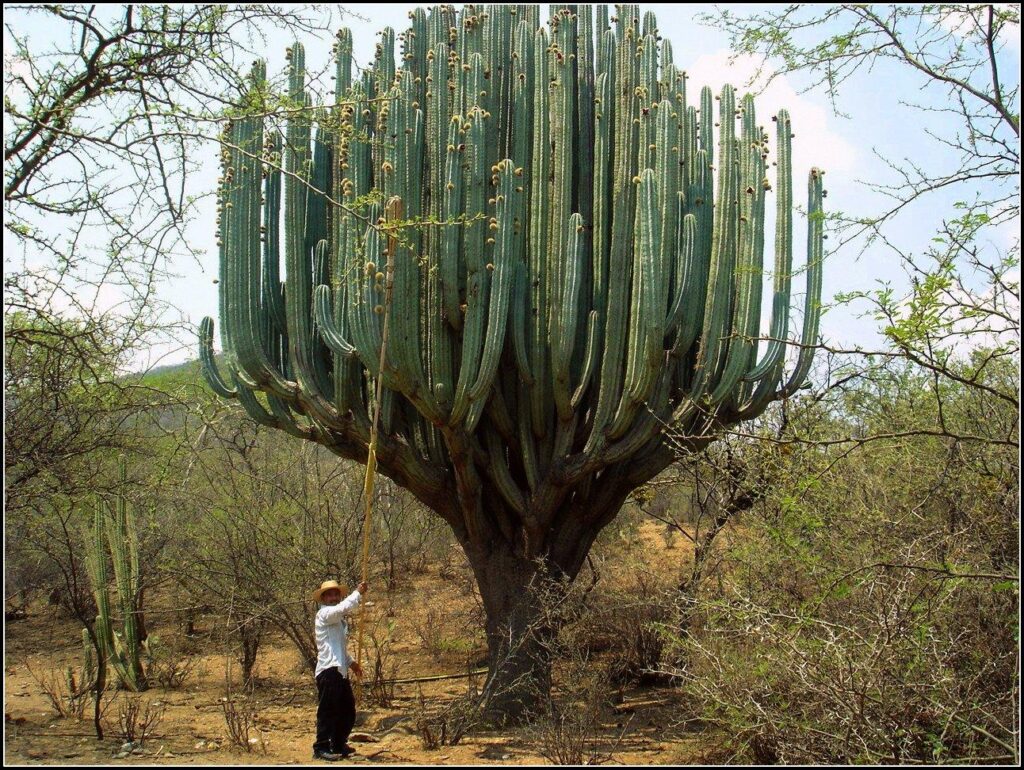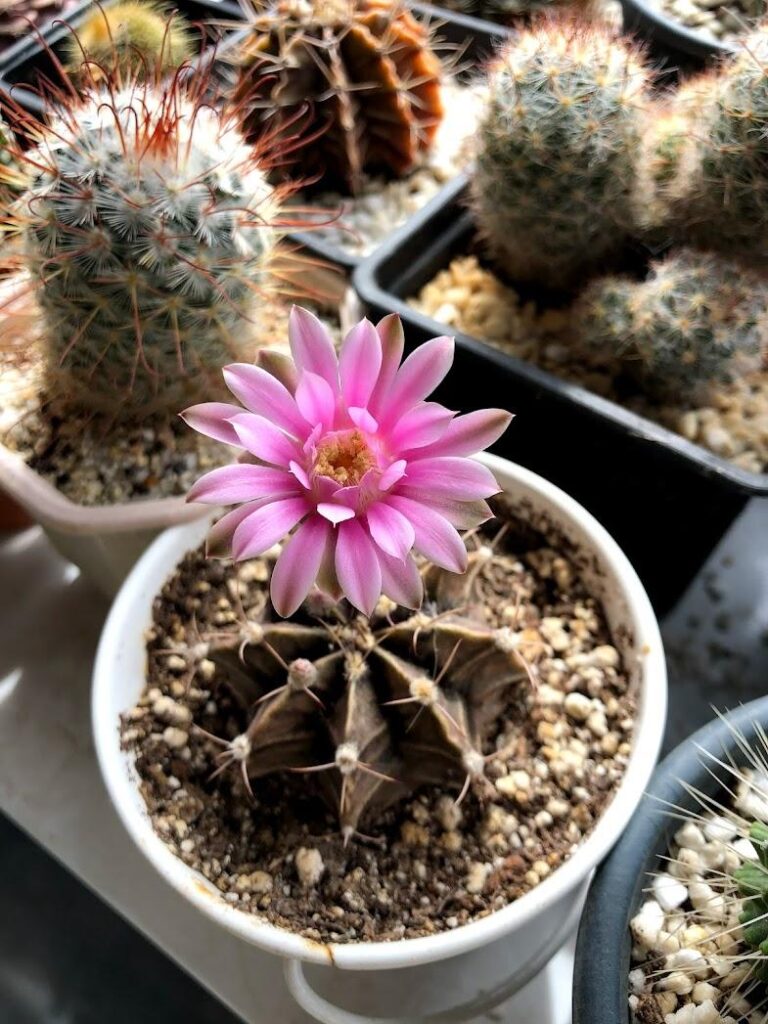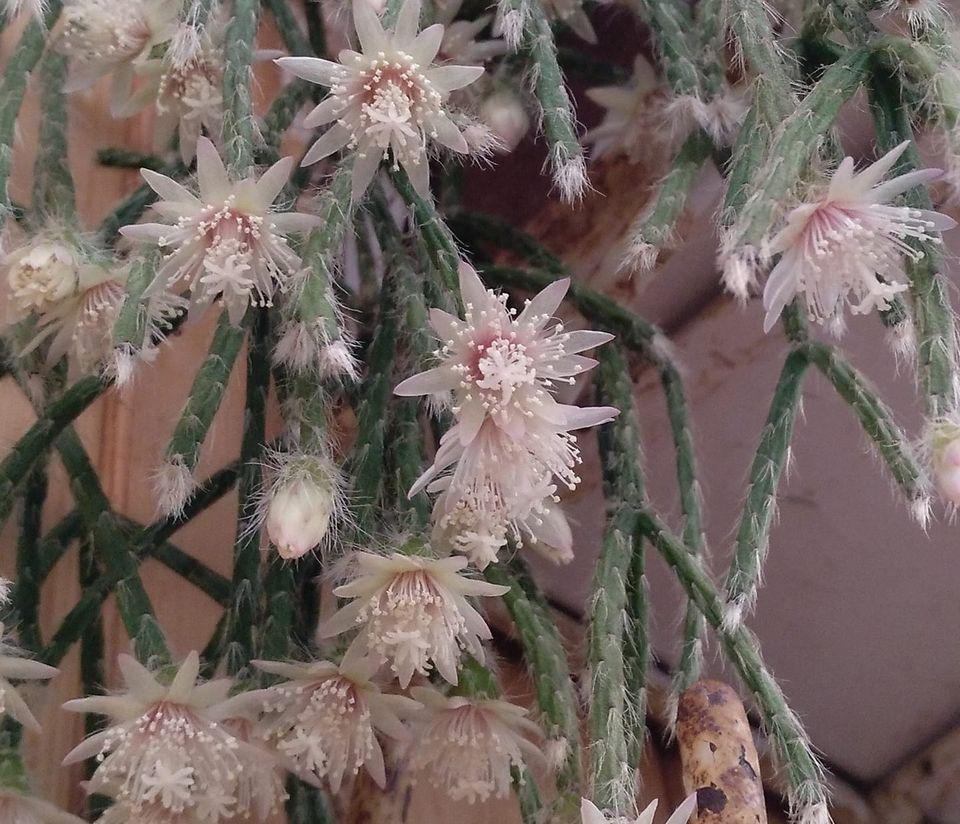Since cacti species have become famous worldwide, there is a widespread opinion that cactus plants might be trees or flowers, depending on their appearance. What is the answer, is cactus a flower a plant or a tree?
Thinking of cacti as trees come from the fact that the Cactaceae family belongs to the Caryophyllales order. Dicotyledones such as many trees, shrubs, lianas, mangroves, stem or leaf succulents, annuals, and even insectivores belong to this order giving the wrong opinion about cacti themselves.
To fix the boundaries, we will explain the origin of cacti species and where do they belong.
History of cactus evolution
As we mentioned, there is universal acceptance that the Cactaceae family might be the core of Caryophyllales order (Cronquist and Thorne 1994)
All the members among the order share some similar characteristics (synapomorphies) – which is not the case for other angiosperm orders and families.

Classification of Cactaceae Family
All recent researches and classification set three major clades as part of this family: Pereskioideae, Opuntioideae, and Cactoideae (Hunt and Taylor 1986, 1990; Gibson and Nobel 1986; Barthlott 1988; Barthlott and Hunt 1993).
The structural criteria differentiate all subfamilies explaining their morphological changes.
As a plant cactus has a perennial and photosynthetic stem, spines represent modified leaves produced on areoles or axillary buds.
Flowers are vivid and beautiful, with many stamens and ovary with parietal placentation of ovules.
Cactus fruit has a berry look and is juicy, sometimes used as a food.
Is cactus a flower a plant or a tree?
Are cacti trees?
The answer is logical and straightforward – NO, here is why. Cacti are a family with more than 1600 species worldwide, all sharing similarities, but never close to a tree.
What is the plant morphology and plant anatomy of a tree, and what is the difference between a cactus plant and a regular tree?
First, to distinguish that anatomy is a study of internal plant structures, while plant morphology (phytomorphology) describes physical and external parts of a plant.

Above in the pictures, we can see the difference between trees and cacti species.
Cacti are not trees. Trees have woody stems – cacti do not. Some cacti species can grow up to the height of trees, but they have succulent stems, which do not classify them as trees.
Cambial woody tissue is specific for trees, which gives the trees outside strength depending on the age.
We agree that sometimes cacti can grow similar to trees. As you can see in the picture below, that does not make their trees. Although Epiphytic cactus species are growing directly on a tree without a soil requiring symbiotic connection to survive.

Related: Solving the Dilemma Why Cacti are Not Trees and What Makes Them Plants
Can we say that cactus is the same as a flower?
No, definitely not and here is why. When we talked about plant anatomy, we saw that a flower is a plant organ, is a cactus plant organ of a plant NO.
The answer is simple because most cacti species produce flowers each year thanks to areolas on the plant tissue.
Flowers deliver from parts called axillary buds located in the areolas at the base of the cactus spines.
What makes cactus a plant?
Let us consider all provided information about the taxonomy of cacti species and the adaptation cactus make in dry environments to survive. Then, after all, we will never wonder again about the cactus being a plant or not.
As all plants, cacti do photosynthesis generating their energy by converting carbon dioxide. The process of transpiration is lower to prevent losing water absorbed in arid regions.
Roots are on the surface to absorb the water and many species have taproots helping store water for a more extended period.
Cactus thorns do not lose water like regular leaves, and many plants have white and dense spines helping in sun reflection.
Cactus stems are thickly storing a lot of water, helping survive in arid environments. These fleshy stems are helpful since most cacti live in the deserts in Northern Mexico, Sonoran desert in North America, South America and other places with many drought days within a year.
How to make cactus bloom?
All cacti species are flowering plants if carried properly. One cactus plant can bloom at least once a year if all conditions are satisfied.
When we discuss blooming, age is an essential factor since many cacti species have their first blooms after reaching ages of growth.
Here is what to consider to make cactus bloom:
1. Proper light and temperatures
If you give your cactus plant the required temperature for growth during all seasons and place it in a light corner of your house, you already assure one condition bringing you a step closer to beautiful flowers
2. Soil mixture
We have already discussed the importance of suitable soil for growing cacti.
Ensure the potting mix has all the required minerals, aeration supplements and well drainage to improve your cactus growth as expected
3. Dormancy period
During the winter months, especially if you do not have a plant house, it is crucial to consider dormancy as a critical period when cacti plants collect energy for blooming during the active months.
In my personal experience, smaller cacti need little watering during the cold season because of their undeveloped internal tissue. However, the big ones thrive best in cold rooms (around 41 F), with no light and no water until spring comes again
4. Fertilizer
Never use fertilizer during the dormancy period because of the inability of plants to use it for growth and blooming. However, forms of fertilizer allowed and recommended during the growing season should be in balanced amounts.
Ensure that the one you use has a balanced NPK suggested for cacti species.
If you have doubts, talk to the supplier or check reliable information on the internet.
Related: Ten Extraordinary Types of Tall Cactus Can Revive Your Yards and Landscapes
5. Watering
Humid environments and excess water may kill your cactus plant. Never put too much water, and always check the soil before watering again.
Well-drainage soil helps better absorption and water loss so your plant can have healthy surroundings to thrive best.
Watering should also be adapted to the growing season, meaning cactus will need more water in the spring and summer and thrive better with low or no watering in autumn and winter.
6. Cactus already in bloom
Buying bloomed cactus is not a bad idea if you want to know the species or the type of flower that specific cactus have. Always check if the flower is natural because sometimes there are artificial, glued on the plant that later damage it.

What cacti are easy flowering species?
Most species are blooming, especially outdoors in arid conditions and deserts.
If you plan to take care of cactus at home and are willing to see cactus flowers, here is a list of easy-to-manage species that do not need much to bloom:
1. Chin cactus – Gymnocalicum
2. Mammilaria
3. Prickly pears- Opuntia
4. Star cactus – Astrophytum
5. Christmas cactus /Easter cactus/Thanksgiving cactus – Schlumbergera
6. Barrel cactus – Ferocactus
FAQ for all cacti lovers
We believe that this article helps you define cactus plants and choose the right one that will bloom in your house. To improve your knowledge more, we prepared a list of common questions that might be useful for you. I hope you will like it!
What cacti species are epiphytic?
Cacti belonging to this group live in rainforests despite their other family members with dry soil preferences.
These species do not need soil to survive because they find mechanisms similar to parasitic lifestyles using organic materials stuck between leaves and branches. They thrive best, growing on other plants.
Succulent plants-cacti belonging to this group are Rhipsalis, Hatiora, Epiphyllum (Orchid cacti), Lepismium, Eccremocactus, Wittia, Kimnachia, Selenicereus, Schlumbergera, Disocactus, and Hylocereus.

How do I identify a cactus plant?
We mentioned the differences between cactus and a tree, and we saw the anatomy of one cactus plant. Therefore it should be easy to say that cactus is a perennial plant with converted leaves into cactus spines (some cacti are spineless). Species might be significant in height as trees (columnar cacti), but their stem is not woody, and their tissue has evolved in a way to collect water for dry periods of the year.
Some cacti are round, other cacti are long with multiple stems, but every cactus in the plant family requests conditions as all succulents.
Is cactus a succulent?
Cacti are without any doubt succulents, but not every succulent plant is a cactus. Cacti distinguish as a separate group because of their spines and areoles. These convergent species went through an evolution process keeping all properties as succulents but with various adaptations to survive.
Succulents have the exact requirements with different leaf appearances, giving them different looks.
Is Euphorbia a cactus?
Euphorbias do not have areolas, and even some species look like cactus plants, they are not part of the cacti family.
Can you eat cactus fruits?
Some species like Prickly pear – Opuntia with edible fruits have glochids on the skin and must remove before consumption.
Glochids are small spines characteristic of this species that cause skin irritation and are hard to remove.
Is your cactus dying? Read and Find Out How to Save a Cactus from Changing Color to Yellow or Brown and check out 8 Useful Varieties of Pink Cactus for Indoors and Outdoors







